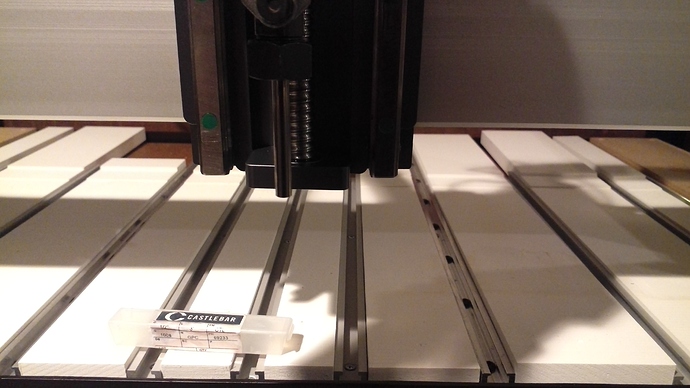Got tired of always jogging the machine around to get a sharp endmill out of the way, so ordered a precision ground rod to use for probing XYZ and to leave in the machine:
Hey that’s a nice move, especially with the BitSetter workflow enforcing a tool length measurement after homing anyway.
That’s a great idea, where did you get the rod from?
Bought it from Amazon:
Castlebar 1/4” X 3”, Grade 1008/C2, Ground Polished Chamfered, Premium 10% Cemented Tungsten Carbide Round Rod
https://www.amazon.com/gp/product/B07P8W1VH8
Only chamfered at one end, despite the photo, and I’m a bit miffed the packaging was for a 1/2" rod, and shipping was exorbitant, but otherwise, it’s perfect.
Holy cow, you aren’t kidding! Shipping is almost 3 times the price of the rod.
Yeah, but that’s what a USPS flat rate box costs, and that’s what they shipped in (probably because they ship a lot of small dense objects), and it was well-packed and arrived safely, and it’s cheaper than stitches.
I was too cheap to buy a precision rod, so I just put a 90deg carbide chamfer bit in up side down.
TBH, I actually have a different bit, but I can’t remember which one it is, so I just found an inexpensive one on Amazon.
Here’s 5 for $21:
Be careful of the cutting edges being in the collet. They may chip or damage the collet surface. More likely with a square-end or ball-end.
I used to use gauge pins (learned that in school, many years ago), but, long ago, cut-off a couple dull/chipped endmills for the purpose. One sharpened to a point (about 25 deg included angle and within a few microns of concentric), another with the cut off end decidedly chamfered to make it obvious which end goes into the collet, in each tool shank diameter I use.
If purchasing, gauge pins may be more accurate, and are generally less expensive, than carbide blanks.
This part got my attention … thinking that somehow I wouldn’t have to reprobe a new bit change. ![]()
Oh, I totally agree with you regarding the price, but I already had the chamfer bit, so it was no cost to use it in its additional role. Plus, when it is dull enough, I’ll just grind the cuting edges down and keep it.
I usually remove the collet nut and collet to put in new bits to make sure I can leave as much of the bit sticking out of the collet, while still engaging the entire collet clamping surface. I’ll definitely be paying attention to which way I insert the bit into the collet from now on though.
I’m, doing something very similar for my probing. I have one in .25" x .125" x .0625" that way I don’t have to change collets.
I’ve been making these for some time now. And you could potentially save some money by making your own! I’ll share my technique, and as always you’re welcome to suggest improvements!
All you need is a piece of hardened steel, a clamp would do nicely. You want to put a piece of stock, something that you might want to make a part out of, on your waste board, then use the clamp to hold that piece in place. Next set up a tool path that moves directly perpendicular to, and in line with, the clamp. You’ll want to zero the tool on the stock corner next to the clamp, not on the part of the stock you would want to cut! At this point be sure that the shank diameter of the tool is the diameter you want for your probe!
Make sure your z clearance height is below the clamp surface, ideally slightly less than your LOC. I’ve found that with tools that have a taper, your speeds and feeds don’t seem to matter too much.
For larger tools and those that don’t have a taper I recommend any speed, and a feed about 120 in/min. I’ve found that you only need to have a depth of cut of about .1" .
That’s all there is to it, load up your program and hit, run! if anyone wants a G-Code file to make these I have plenty just let me know!
This topic was automatically closed after 30 days. New replies are no longer allowed.
Yep, obviously should have bought:
https://www.amazon.com/HHIP-4103-0250-Replacement-0-0002-Tolerance/dp/B01BHHK2M0/
instead.
